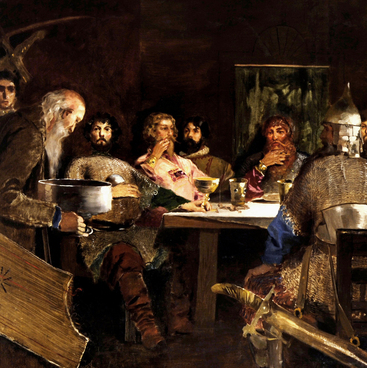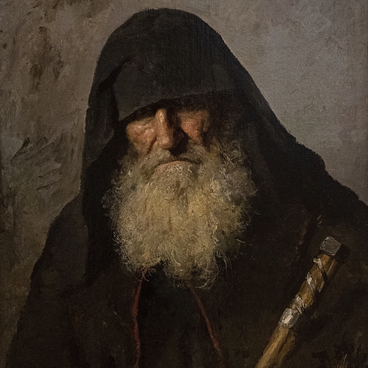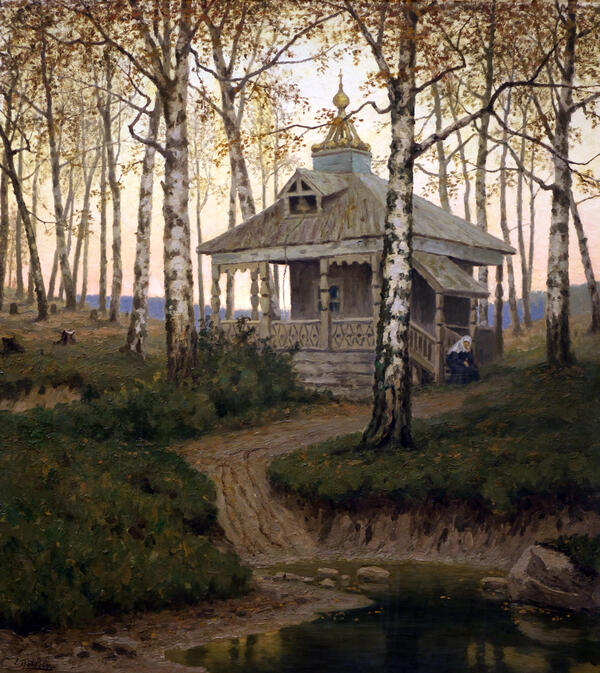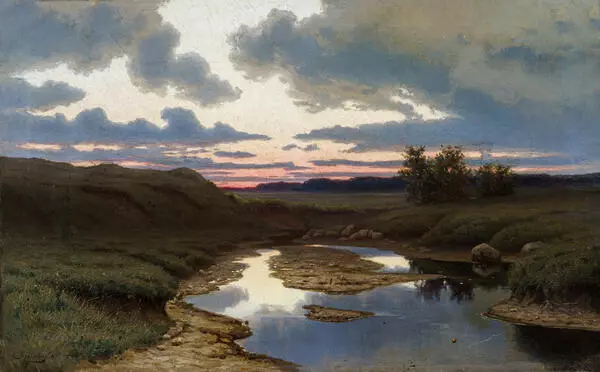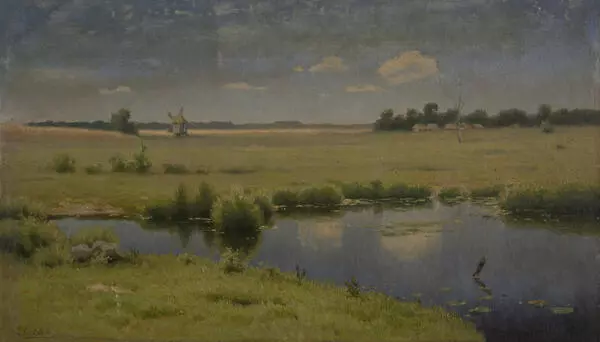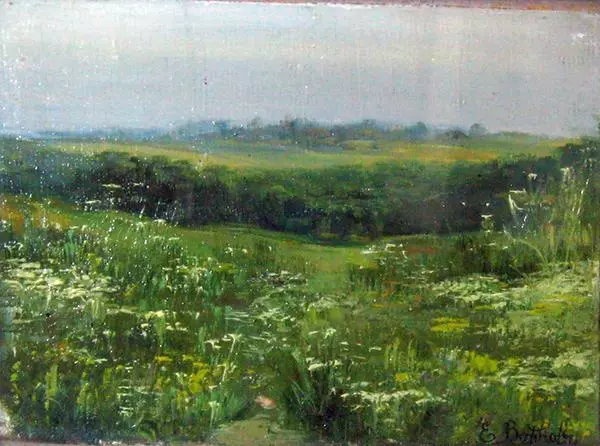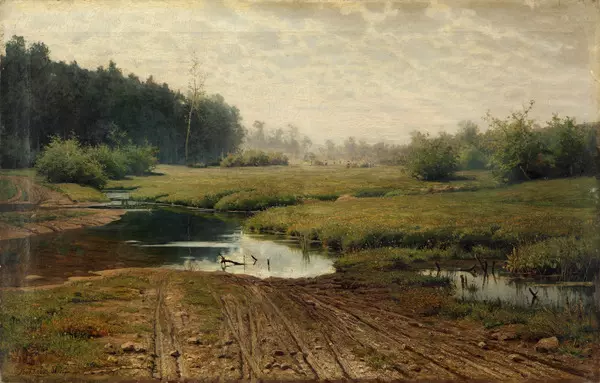Many landscape painters of the second half of the 19th century became interested in the diversity of Russian landscapes. The painters of this period sought to show the viewer that nature could be beautiful even in its apparent simplicity. These were the views — familiar and seemingly ordinary — that artists chose for their paintings.
Yefim Volkov was born in St. Petersburg in the family of a medical assistant in 1844. At first, he did not think about an artistic career and after graduating from high school, he became a clerical officer. However, in 1866, at the age of 22, Volkov started attending the Drawing School of the Imperial Society for the Encouragement of Arts. He spent only a year there, and then audited classes at the Academy of Arts for one more year. In 1870, Volkov received the title of a non-class artist for his ‘View in the Vicinity of St. Petersburg’, which he displayed at the academic exhibition.
Volkov mostly painted simple Russian landscapes, which lacked extreme pathos or drama. In these works, the artist sought to emphasize the characteristic original features of Russian nature.
Volkov’s works received awards at the World Exhibition in London, as well as at exhibitions of the Society for the Encouragement of the Arts. In 1879, he was elected a member of the Association of Traveling Art Exhibitions (the Wanderers group). Among the Wanderers, he found like-minded people and loyal friends, with whom he traveled, worked, and participated in exhibitions all over Russia. In 1899, Volkov was awarded the title of academician for his contribution to Russian art.
The artist painted “Landscape with a Swamp” in the 1880s. He depicts a swampy plain in the north of Russia. Through minute details, Volkov conveys the monotony of the landscape and the feeling of despondency. There is little vegetation in the canvas: some stunted trees, almost devoid of any foliage, a couple of low bushes on the islets, some wilted grass on the bumps. The sky is dull and the earth is cold and filled with water. The figure of a lonely traveler enhances the feeling of melancholy and restlessness.
At the same time, Volkov filled the pictorial space with air: sunlight breaks through the whitish clouds; the sky is reflected in golden pearl puddles. The restrained color palette that Volkov uses conveys the plainness of the Russian landscape.
Yefim Volkov was born in St. Petersburg in the family of a medical assistant in 1844. At first, he did not think about an artistic career and after graduating from high school, he became a clerical officer. However, in 1866, at the age of 22, Volkov started attending the Drawing School of the Imperial Society for the Encouragement of Arts. He spent only a year there, and then audited classes at the Academy of Arts for one more year. In 1870, Volkov received the title of a non-class artist for his ‘View in the Vicinity of St. Petersburg’, which he displayed at the academic exhibition.
Volkov mostly painted simple Russian landscapes, which lacked extreme pathos or drama. In these works, the artist sought to emphasize the characteristic original features of Russian nature.
Volkov’s works received awards at the World Exhibition in London, as well as at exhibitions of the Society for the Encouragement of the Arts. In 1879, he was elected a member of the Association of Traveling Art Exhibitions (the Wanderers group). Among the Wanderers, he found like-minded people and loyal friends, with whom he traveled, worked, and participated in exhibitions all over Russia. In 1899, Volkov was awarded the title of academician for his contribution to Russian art.
The artist painted “Landscape with a Swamp” in the 1880s. He depicts a swampy plain in the north of Russia. Through minute details, Volkov conveys the monotony of the landscape and the feeling of despondency. There is little vegetation in the canvas: some stunted trees, almost devoid of any foliage, a couple of low bushes on the islets, some wilted grass on the bumps. The sky is dull and the earth is cold and filled with water. The figure of a lonely traveler enhances the feeling of melancholy and restlessness.
At the same time, Volkov filled the pictorial space with air: sunlight breaks through the whitish clouds; the sky is reflected in golden pearl puddles. The restrained color palette that Volkov uses conveys the plainness of the Russian landscape.


